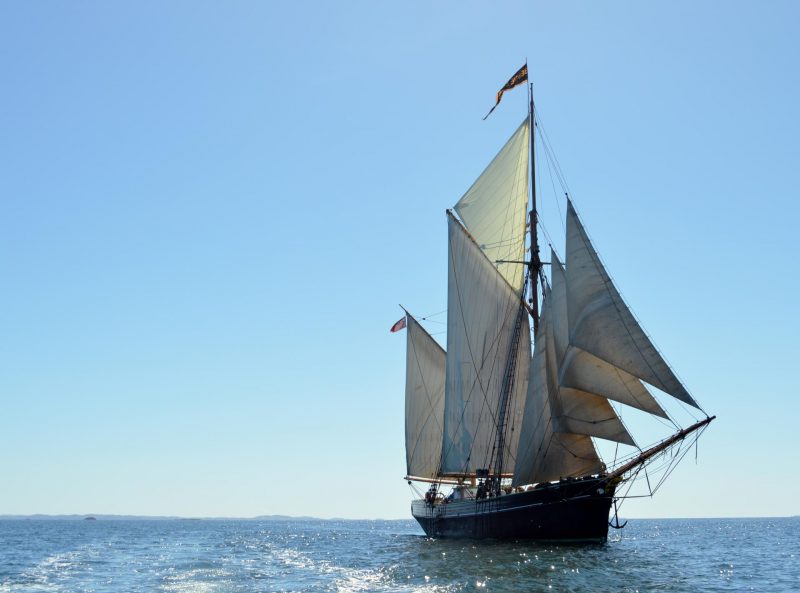Shrouded in myths and mists in equal measure and home to gorgeous beaches, magical camping spots and, I would argue, the tastiest whiskey in the world, the archipelagos of the inner and outer Hebrides are one of the dreamiest places to explore on earth. Here’s my Hebrides island guide – my pick of the most enticing islands and the best places to stay.
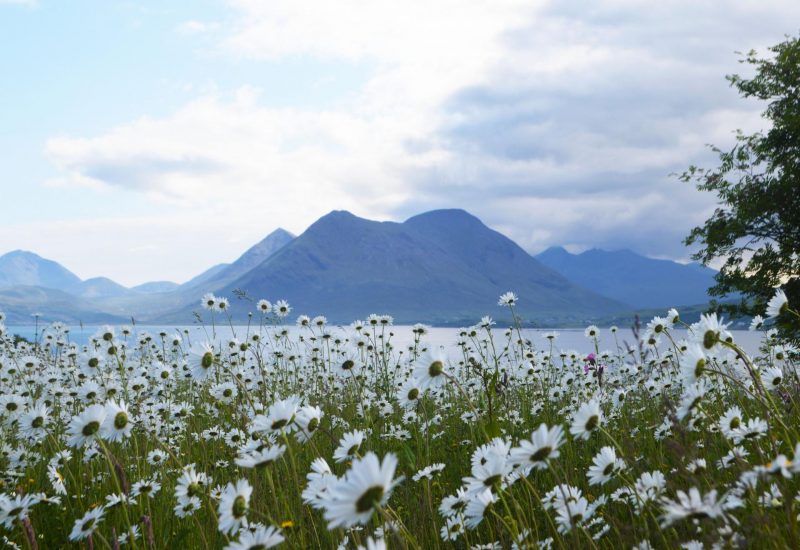
There’s nowhere like the Scottish Hebrides. Each island in this jewel-green chain is totally unique, from the storied white sand beaches of Iona to Lunga’s emerald cliffs, home to charming puffins. From friendly Colonsay, the smallest island in the world to boast a microbrewery, to Staffa, whose ancient stone pillars have been loved by poets, writers and composers for centuries.
When sailing through the Hebrides a few years ago I thumbed through a dog-eared copy of The Scottish Islands by Hamish Haswell-Smith. It lovingly lists the particulars of hundreds of Hebridean islands, from size to population to quirky historical facts – some are wildlife havens, some have chequered pasts, some are farmed and cared for, some are tiny, wild and uninhabited. It made me itch to explore them all. I’ve got lots still to see, but of all the islands I’ve landed on, these are my much-loved favourites.
Grab a glass of Talisker and get planning your own island-hopping journey.
THE ISLANDS – Hebrides island guide
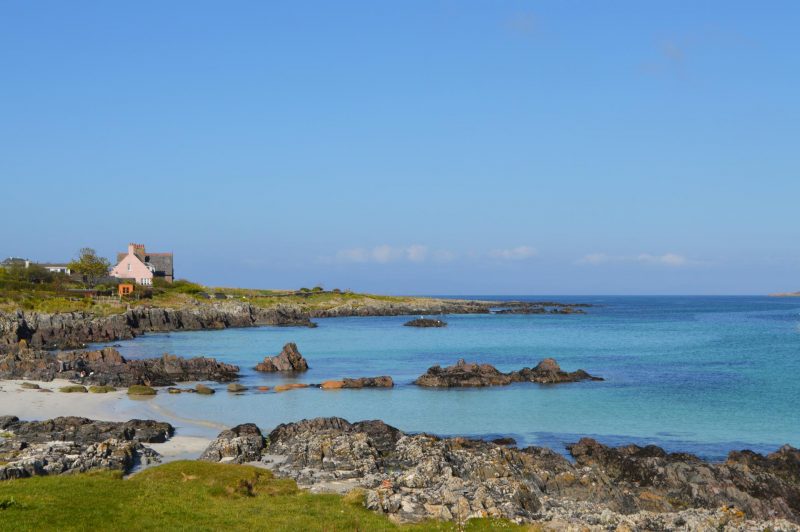
IONA
You don’t have to be religious to be awe-struck by the unlikely, remote island where St Columba first planted the seed of Christianity in Britain in AD 563. Iona is home to a lively community of farmers, fishermen and artists, and now pilgrims pour in to visit the medieval abbey that crowns it, yet there are still wild pockets to explore – follow the road (it’s pretty much the only one, so you can’t go wrong) past the abbey as it winds along past gently sloping fields and you’ll come to White Stand of the Monks, one of my favourite beaches in the world. The soft white sand is studded with pebbles as bright and beautiful as gems. The water is so turquoise you’d mistake it for the Caribbean (until you dip a toe in the ice-cold waves, that is). When I was there I had the beach completely to myself and couldn’t resist shedding all my clothes for a solo swim, just me (in the nuddypants), Iona and a view across to Mull.
STAY: Iona Youth Hostel has to be one of the most remote in Britain, and one of the loveliest, a low green cabin at the end of a quiet lane, a stone’s throw from the sea and with a cosy common room with a welcoming wood stove.
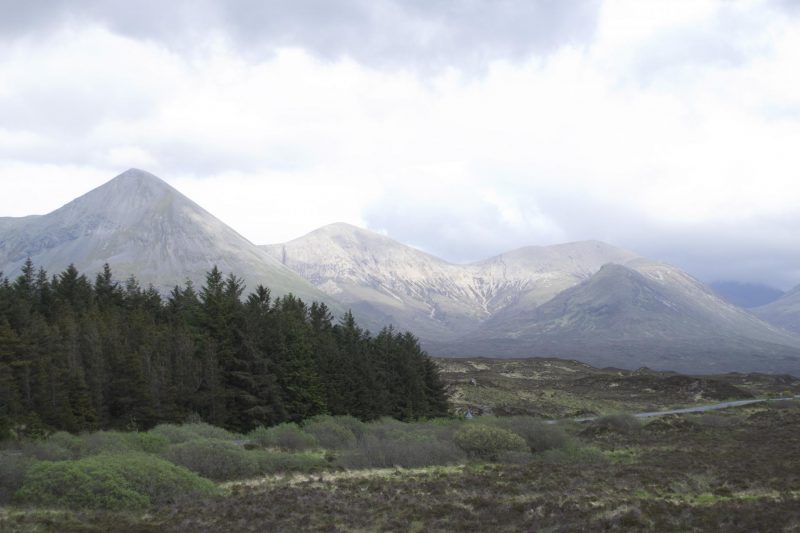
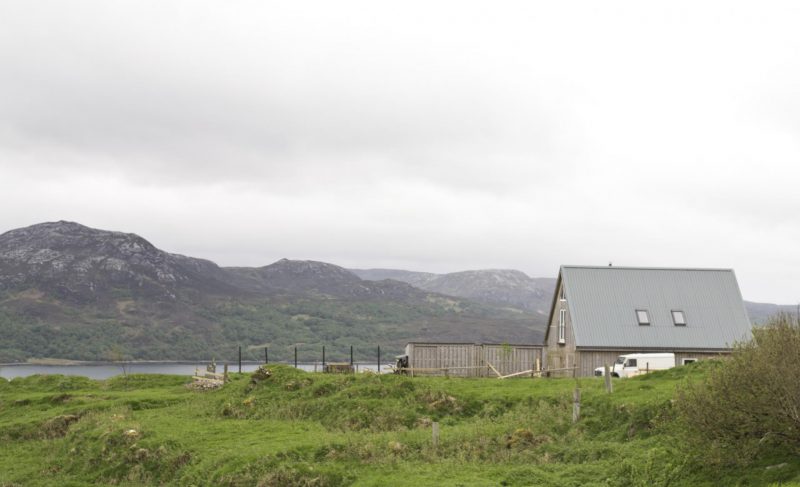
SKYE
Is the biggest and inevitably the most visited of the Hebrides, but for good reason – its landscape is endlessly varied, from the pale sands and clear waters of its shoreline to the rugged, Lord of the Rings-esque landscape of the Trotternish and the Cuillin mountain ridges at its heart. It’s home to one of the busiest, biggest island communities, too, and attracts craftspeople, painters and artisans who make their home here and whose beautiful creations will delight art lovers. I have so many favourites spots here. I love the Sleat Peninsula – the ‘garden of Skye’ is remote and quiet and its coastline is a joy to explore. They’re not so secret these days, but the bizarre and charming Fairy Glen, a magical landscape in pocket size, is wonderful explored at sunrise or sunset, and the Fairy Pools are a must for any keen wild swimmer – fed by the Cuillin hills, these crystal-clear deep natural pools cascade crazily into each other. On your way back to the mainland, hop over to the small island of Raasay for the day to tour the new Raasay Distillery – their first Scottish whiskey will be ready in a few years, but until then they sell a lovely young spirit called ‘While We Wait’, delicious to sip whilst looking back over across the water to Skye.
STAY: The Art House . A cosy slice of Scandinavian chic nestled on Skye’s rugged coastline, this modern B&B is filled with good things. Like epic views over Loch Eishort, amazing artwork, a warm welcome and a dog named Watson.
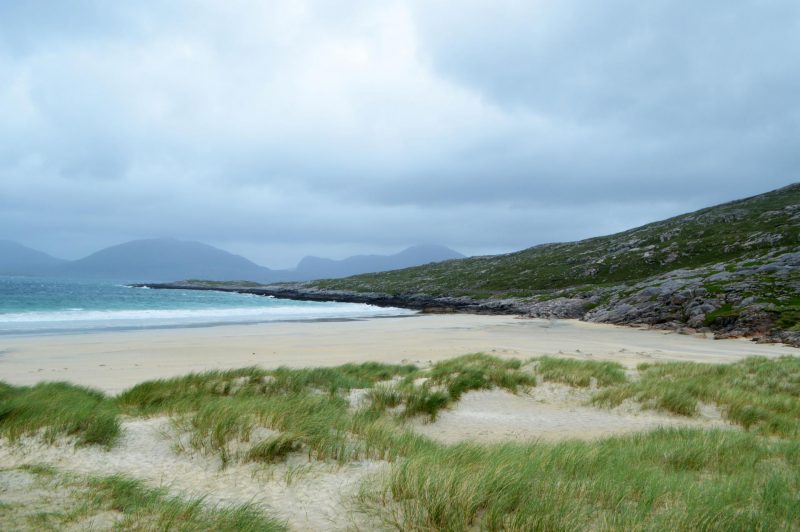
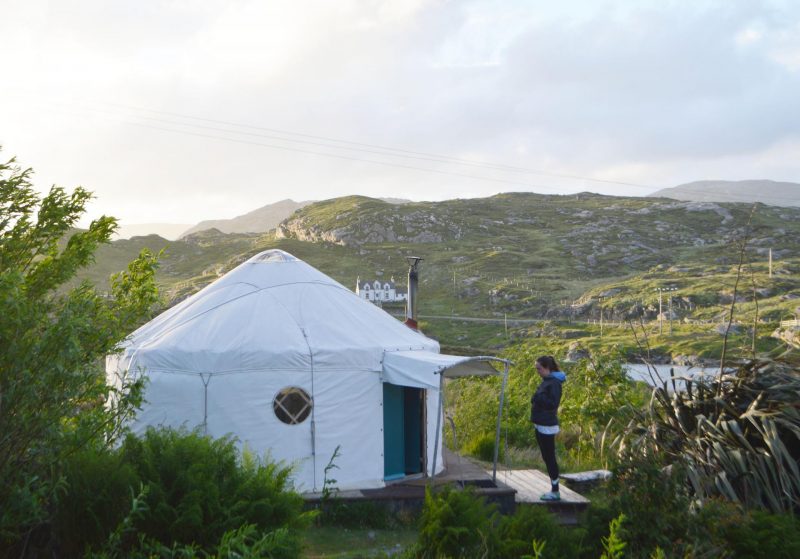
HARRIS
Lewis and Harris is just one island, despite its name – southerly Harris is connected to Lewis in the north by a narrow strait. Lewis is greener and home to the famed Callenish Standing Stones, but it’s Harris that I remember. It’s rather grey and barren at first glimpse (or at least when seen whilst driving through horizontal rain, as we did when we rolled off the ferry from Skye) but let the sun come out and it will reveal a bewitchingly wild, primitive landscape where gloriously clear cold seas lap the rocks, incredible sunsets paint the rocks red and gold and a warm welcome awaits in the pretty villages. It’s also home to most of the white sand, blue ocean beaches you see in Visit Scotland adverts and, inland, pools of water caught between rocks, known as lochans, that are a wild swimmer’s delight.
STAY: We stayed at the yurts at Lickisto Blackhouse, canvas tents that look out to sea from a charming smallholding. After a few days of wild camping they seemed like the ultimate luxury – inside they’re kitted out with futons and a crackling stove you can make s’mores and warm your wet socks over. Owner John has also restored an incredible traditional blackhouse on the farm, which doubles up as a common space. An otherworldly, lovely place.
COLONSAY
Prettier and gentler than some of the wilder treeless islands, friendly Colonsay has lush green farms, wild flowers (in late summer the lanes are ablaze with gorse), even a literature festival. At 10 miles long and two miles wide it’s perfect for exploring on foot. It’s also home to the smallest island brewery in the world. A Garden of Eden in which to stay for a few days and try the local tipple down the pub (it’s called the Colonsay pub and it’s the only one, so you can’t miss it) of an evening.
STAY: If arriving on Colonsay makes you never want to leave, stay for a week or two in Longfield House, a cute self-catered cottage close enough to the ocean for the waves to lull you to sleep each night.
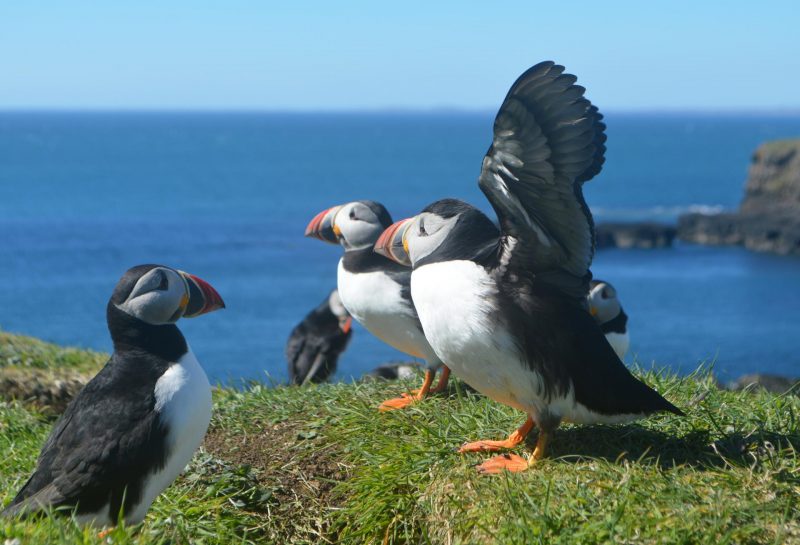
LUNGA
The only residents on this tiny patch of land nicknamed ‘a green jewel in a peacock sea’ are a colony of puffins, who arrive in spring to lay eggs on its cliff edges. Watching these charming, clown-faced little characters toddle in and out of their burrows is mesmerising.
STAY: Uninhabited. In the summer boats from the island of Mull and from Oban on the mainland visit Lunga and Staffa (below).
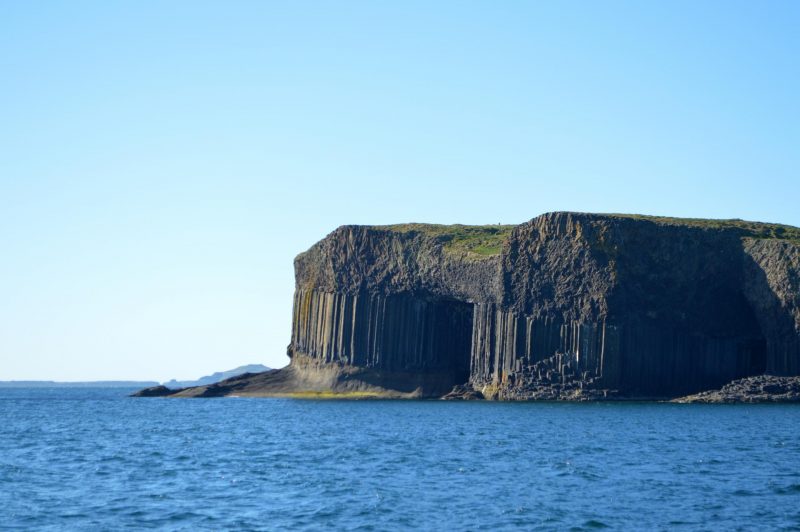
STAFFA
Majestic Staffa’s ancient volcanic columns have inspired visitors as illustrious as Queen Victoria and William Wordsworth in the past, and the timeless pull of this small uninhabited island sees boatloads of explorers visit each summer. If you visit by boat, take a dinghy right into the dark depths of Fingal’s Cave – the story goes that its astonishing hexagonal pillars were the end pieces of a bridge built by the Irish giant Finn McCool.
STAY: Uninhabited (see above).
COLL
On Coll I walked along the empty white sand beach by Loch Breachacha and a gang of curious seals popped their heads out to watch me as I waded out to swim in the crystalline water. It was such a peaceful spot, I couldn’t quite believe it when I looked up the loch in The Scottish Islands later – it’s called the Stream of Heads, after the battle of 1583 in which the Coll branch of the Maclean clan overwhelmed the invading Duart branch, then summarily chopped off their heads and threw them in the water.
Coll has a friendly small village and plenty of gorgeous beaches but I’ll always remember the island as a wildlife haven. As we left Coll at sunset a pod of inquisitive dolphins came and swam right around our boat, diving under it and showing off with leaps and backflips in the pink evening light. Hebridean Magic.
STAY: The jury seems to be out on whether you can wild camp on Coll, but a good compromise is Arinagour Wild Camping, a completely wild spot right by the sea behind the Coll Hotel that the owners kindly allow to be used by campers for free – you can even use the hotel’s loos and showers.
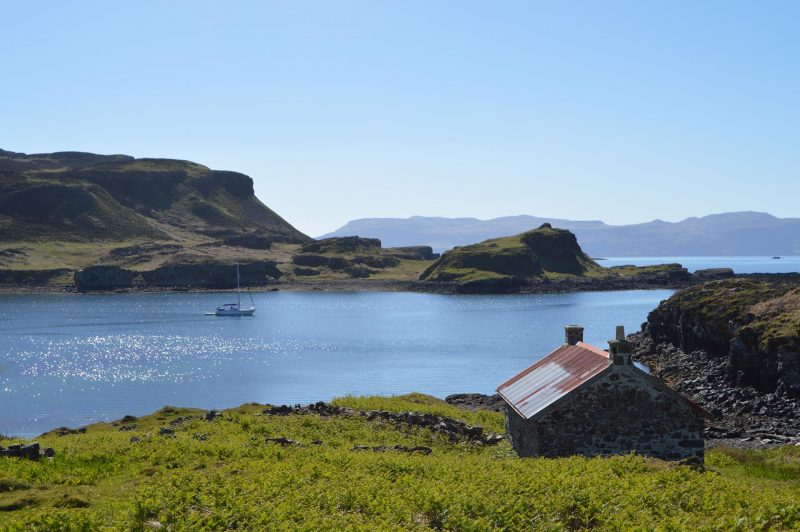
GOMETRA
When I think of this tiny island I think of colours – of the glassy deep blue of the water surrounding it and of the dazzling green of the island itself, dotted with the pure white of its resident sheep. There’s not much else – only a handful of farmers live here, and they call their home, which you can walk across in an hour, ‘a peopled wilderness’.
STAY: Gometra may be completely off-grid but it boasts a small bothy (one of the few houses on the island) that you can rent on AirBnB. The Teacher’s Bothy is an eight-mile walk in from the nearest road, sleeps two and is charming and simple. The tiny honesty shop next door sells essentials and the discarded antlers of the island’s red deer.
HOW TO GET AROUND
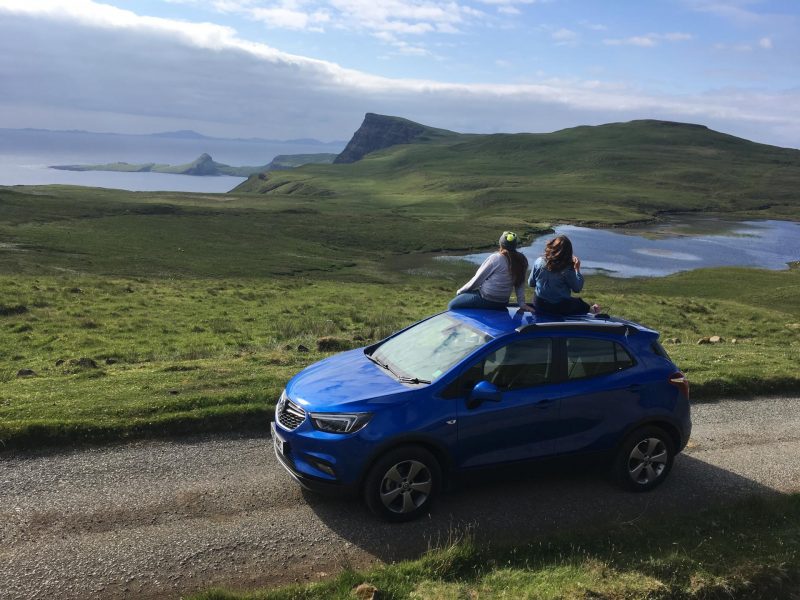
By car: By far the easiest way to explore the islands is to drive or take public transport to Inverness and hire a car – there are multiple companies based in the (tiny) terminal. On our latest road trip the lovely lot at Vauxhall were kind enough to lend us a Mokka X, the perfect road-tripping car with space for all our tents and gear in the back. Plus, the drive from Inverness to Skye or to Oban, a good base for catching ferries to the Inner and Outer Hebrides, is glorious – you hug the edge of Loch Ness for miles. If you choose to travel by car, try to share the journey with friends.
By ferry: Catching a ‘Cal Mac’ – the Caledonian MacBrayne ferries – between islands is a Hebridean rite of passage. Some are short, sweet hops, others are hours of crossings which can be pretty rough in foul weather. The ferries themselves are cosy, with coffee shops and free wifi onboard, and there’s a real pleasure in taking it slow, hopping from island to island according to the whims of their timetables. Check online to plan a trip and for winter and summer schedules. It’s easy to walk across most of the smaller islands, too, making ferries by far the most planet-friendly travel option.
By tall ship: Get a whole different view of the islands aboard the Bessie Ellen, one of the last of Britain’s traditional trading ketches still to sail our seas. First built in 1904 and thoughtfully restored by skipper Nikki Alford, Bessie now spends her summers wandering where the wind takes her around Scotland’s Hebridean archipelagos. Each day is different sailing on Bessie, too – as part of the crew you muck in with running the boat, navigating and taking a turn at the helm as well as hiking on land, swimming off the boat and watching incredible sunsets from the deck. I joined Bessie’s crew last year – see a video here of our journey.
